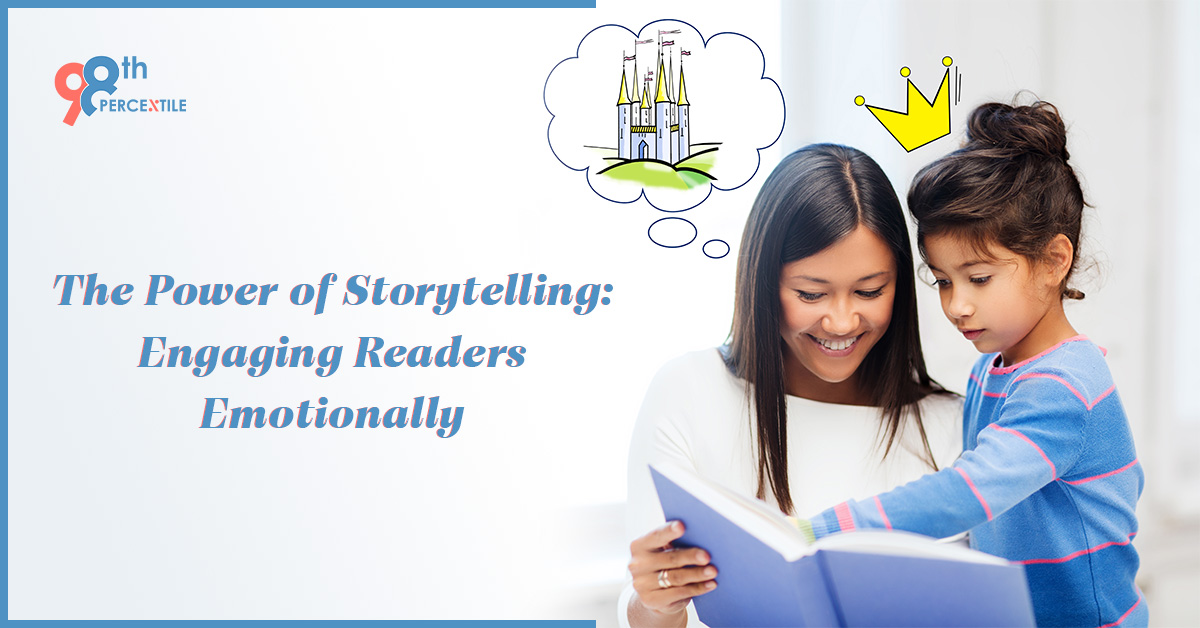Storytelling is an ancient art form that transcends cultural boundaries and has been integral to human communication for millennia. Throughout history, people have used stories to convey knowledge, share experiences, and elicit emotions. In the realm of literature, storytelling takes on a profound role, allowing authors to craft narratives that captivate readers' hearts and minds. This essay delves into the power of storytelling and how it engages readers emotionally, making literature an essential component of human culture and society.
The Human Connection to Stories
At its core, storytelling taps into the fundamental human need for connection and understanding. Children listen to bedtime stories with rapt attention from an early age, eager to immerse themselves in a world of fantasy and imagination. As we grow older, the allure of storytelling remains strong. Through narratives, readers can empathize with characters, learn from their experiences, and see reflections of their own lives and struggles. This connection to the characters and the story builds emotional engagement, leading readers to invest in the narrative and its outcome.
Creating Relatable Characters
One of the most powerful aspects of storytelling is the creation of relatable characters. Well-developed characters possess complex personalities, motivations, and flaws that mirror real-life individuals. Readers can see themselves in these characters, recognizing their fears, hopes, and aspirations. When readers find themselves in the shoes of a protagonist facing adversity, they experience an emotional bond, fostering empathy and understanding.
The Hero's Journey
A recurring motif in storytelling is the hero's journey, an archetypal narrative structure found in myths and legends worldwide. The hero's journey typically follows a protagonist through trials and challenges, ultimately leading to transformation and growth. Readers are drawn to these journeys because they mirror the struggles and triumphs of the human experience. Witnessing characters overcome obstacles and emerge stronger resonates with readers, who can draw inspiration and courage from these stories in their own lives.
Enhance Your Child's Verbal Abilities: Start Trial Now!
Eliciting Emotions through Themes
Themes lie at the heart of storytelling, encapsulating the more profound messages and ideas conveyed by the narrative. Themes such as love, loss, friendship, betrayal, and redemption evoke profound emotions in readers. By exploring universal themes, authors establish a common ground with their audience, appealing to shared emotional experiences and values. The emotional impact of a well-crafted theme can linger long after the book is closed, leaving a lasting impression on readers.
The Power of Imagery and Descriptions
In storytelling, vivid imagery and evocative descriptions transport readers into the world the author has created. The ability to paint a mental picture through words is a potent tool for engaging readers emotionally. Descriptive prose allows readers to see, hear, smell, taste, and touch the story's environment, intensifying their emotional connection to the narrative. From the bustling streets of a vibrant city to the quiet serenity of a secluded forest, the power of imagery brings the story to life and resonates with readers on a sensory level.
Tapping into Emotions with Conflict
Conflict is the engine that drives a compelling story. Whether it's a clash of ideologies, a fight against evil, or an internal struggle, conflict injects tension and emotion into the narrative. Readers become invested in the resolution of the conflict, eagerly following the characters' journey to discover how it unfolds. The emotional investment intensifies as readers become engrossed in the characters' desires and fears, hoping for a positive outcome and empathizing with their setbacks.
Narrative Structure and Emotional Resonance
The structure of a story significantly influences its emotional impact. A well-organized plot with carefully timed revelations and climaxes can trigger a rollercoaster of emotions in readers. Suspense, surprise, and unexpected twists keep readers on the edge of their seats, eager to see how the narrative unfolds. Emotional resonance is heightened when the structure seamlessly integrates with character development, theme exploration, and descriptive imagery, creating a multi-layered experience for readers.
Book 2-Week English Trial Classes Now!
The Cathartic Effect of Storytelling
The emotional engagement experienced by readers through storytelling can be cathartic. Literature provides a safe space for readers to process and explore their emotions, offering a means of escape from their everyday lives. A poignant story can elicit tears of sadness or joy, helping readers navigate their feelings and understand their emotional landscape. This cathartic effect reinforces the power of storytelling as a therapeutic and transformative tool.
In conclusion, storytelling's power lies in its ability to engage readers emotionally on multiple levels. Authors can forge a profound connection with their audience by creating relatable characters, exploring universal themes, employing imagery and descriptive prose, and structuring narratives for maximum impact. The emotional journey readers undertake through the pages of a story can be transformative, leaving them with lasting memories and lessons learned. In an increasingly digital age, storytelling remains an essential medium for fostering empathy, understanding, and human connection. As long as there are tales to be told, the power of storytelling will endure, shaping cultures and societies for generations to come.

 Students/Staff
Students/Staff Parents
Parents ElevatEd
ElevatEd



-Nov-18-2025-03-57-47-3267-AM.png?width=360&length=360&name=401x226%20(6)-Nov-18-2025-03-57-47-3267-AM.png)



-Jul-22-2025-03-16-52-8797-AM.png?width=360&length=360&name=401x226%20(6)-Jul-22-2025-03-16-52-8797-AM.png)






